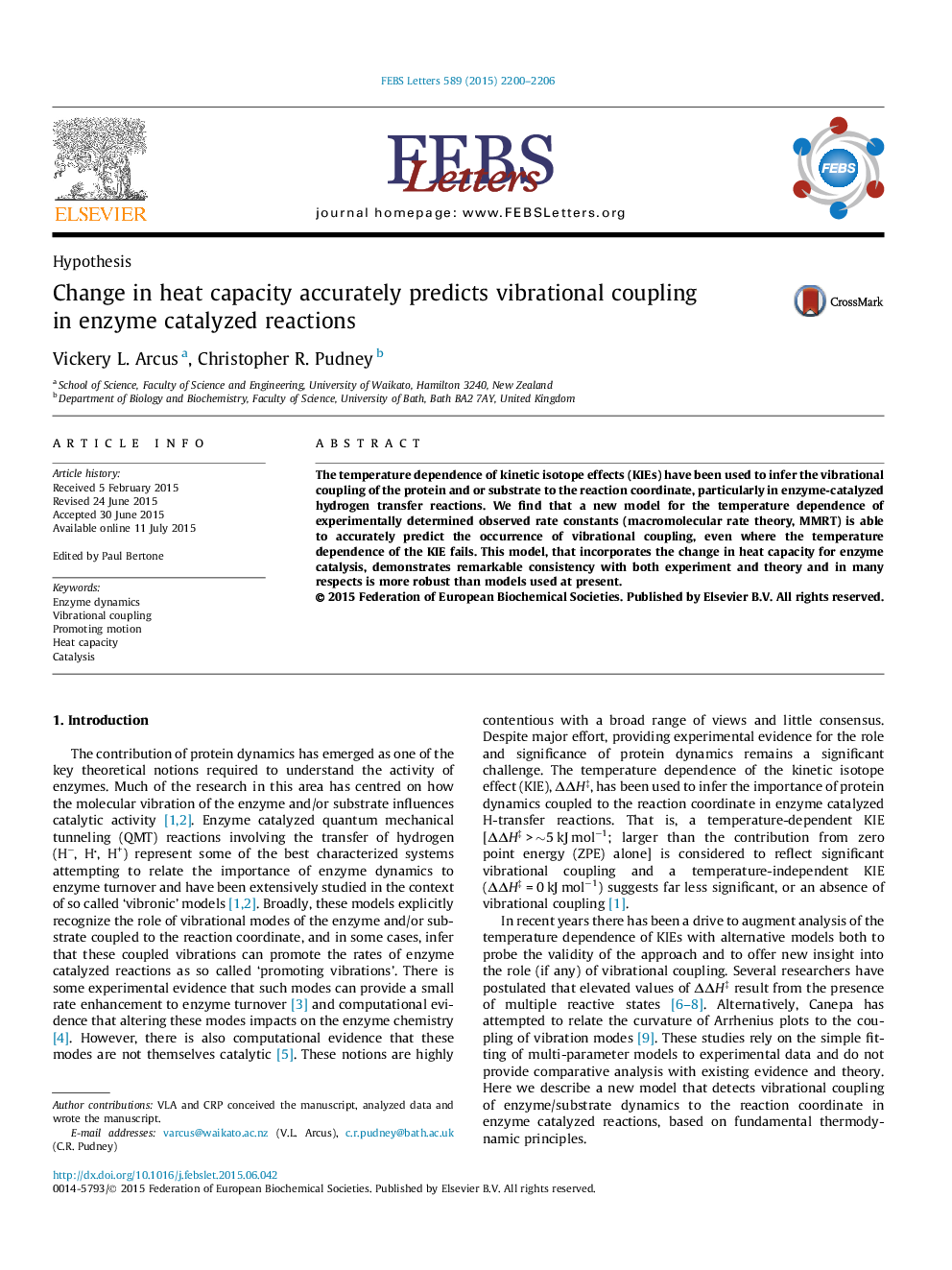| Article ID | Journal | Published Year | Pages | File Type |
|---|---|---|---|---|
| 2047499 | FEBS Letters | 2015 | 7 Pages |
•We demonstrate a new model to detect vibrationally coupled enzyme dynamics.•We find the change in heat capacity predicts the occurrence of coupled dynamics.•Our model is much more accurate than the most commonly used experimental metric.•Heat capacity can reflect changes in the frequency of vibrationally coupled dynamics.
The temperature dependence of kinetic isotope effects (KIEs) have been used to infer the vibrational coupling of the protein and or substrate to the reaction coordinate, particularly in enzyme-catalyzed hydrogen transfer reactions. We find that a new model for the temperature dependence of experimentally determined observed rate constants (macromolecular rate theory, MMRT) is able to accurately predict the occurrence of vibrational coupling, even where the temperature dependence of the KIE fails. This model, that incorporates the change in heat capacity for enzyme catalysis, demonstrates remarkable consistency with both experiment and theory and in many respects is more robust than models used at present.
